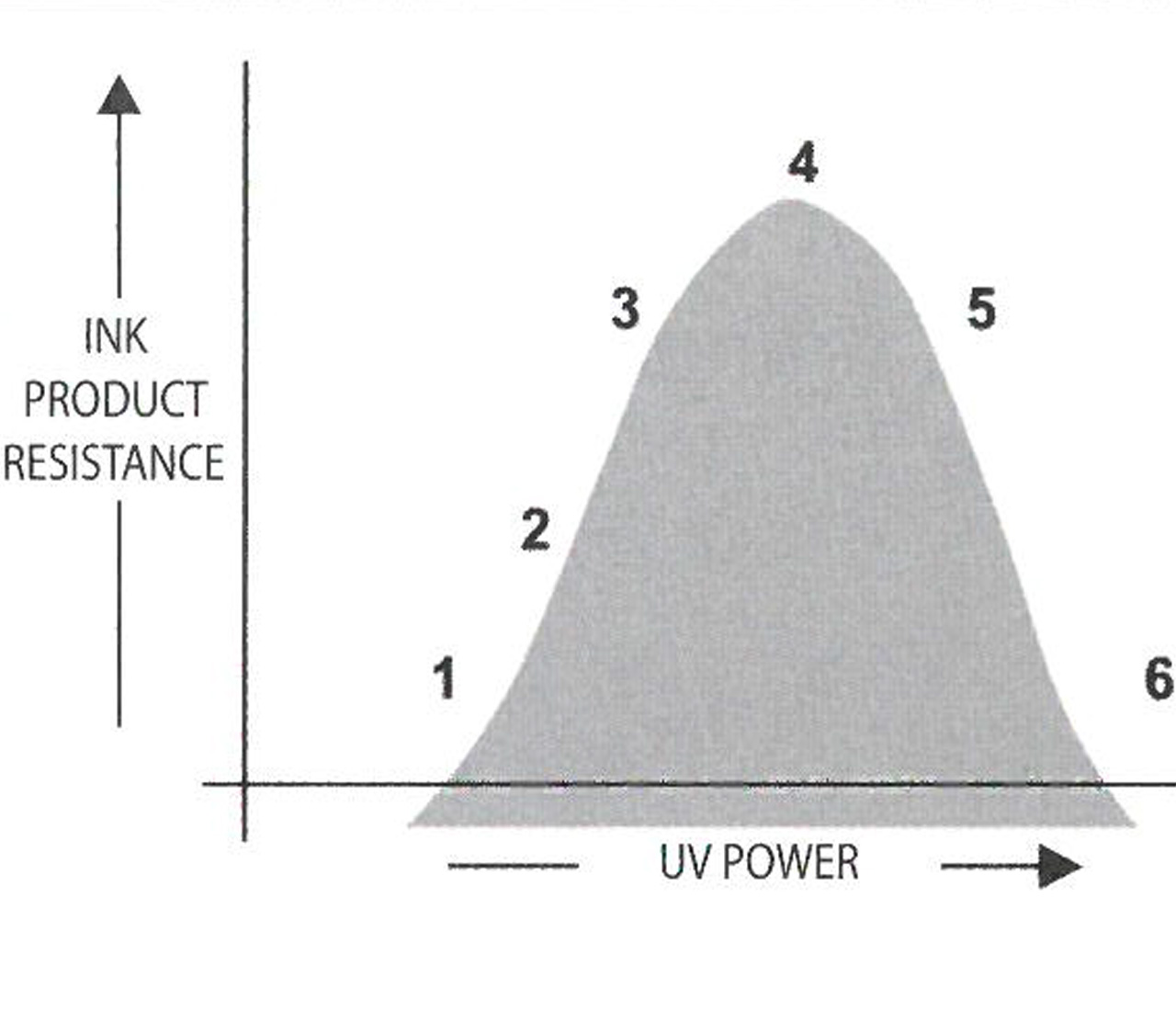UV ink fails to cure in the correct place on the press.
As UV inks and coatings are exposed to ultraviolet light:
- Little or no exposure – ink remains liquid;
- Polimerizzazione parziale (di solito si tratta solo della superficie)
- Partial curing (usually surface only) with possible ‘skinning’ and generally poor adhesion to the substrate;
- Tacky surface, common to under curing;
- ‘Correctly cured’ with no tack, low odour, flexible and with good adhesion;
- Increased surface hardness that can become brittle with poor over printability;
- Primary ink surface not receptive to secondary inks resulting in poor adhesion and low flexibility with flexo and letterpress processes.
Causes:
– Direct exposure to sunlight or to general lighting sources;
– Smell from ink;
– Ink is reticulating on top of the first colour (often screen white);
– Cured ink has poor adhesion to the film substrate;
– Lamp problems:
- Low lamp power setting;
- Weak exposure bulbs;
- Dirty lamp reflectors;
- Incorrect lamp focus.
Solutions:
– Eliminate direct exposure to sunlight. Use UV filter covers on light above the press;
– Ink not sufficiently cured. Turn up UV lamp power to a minimum of 100 W/cm and check the lamp and reflectors are clean. Reduce press speed to increase UV lamp dwell time;
– Over curing the white ink. Turn the lamp power down to a point where there is no surface tack but good secondary ink reception;
– Excessive curing of the ink causing shrinkage of the ink film. Turn the power of the lamps down to a minimum and also check the dyne level of the film.
– Lamp Solutions:
- Increase lamp power setting;
- Replace exposure bulbs;
- Clean lamps reflectors;
- Adjust focus to optimal distance.




